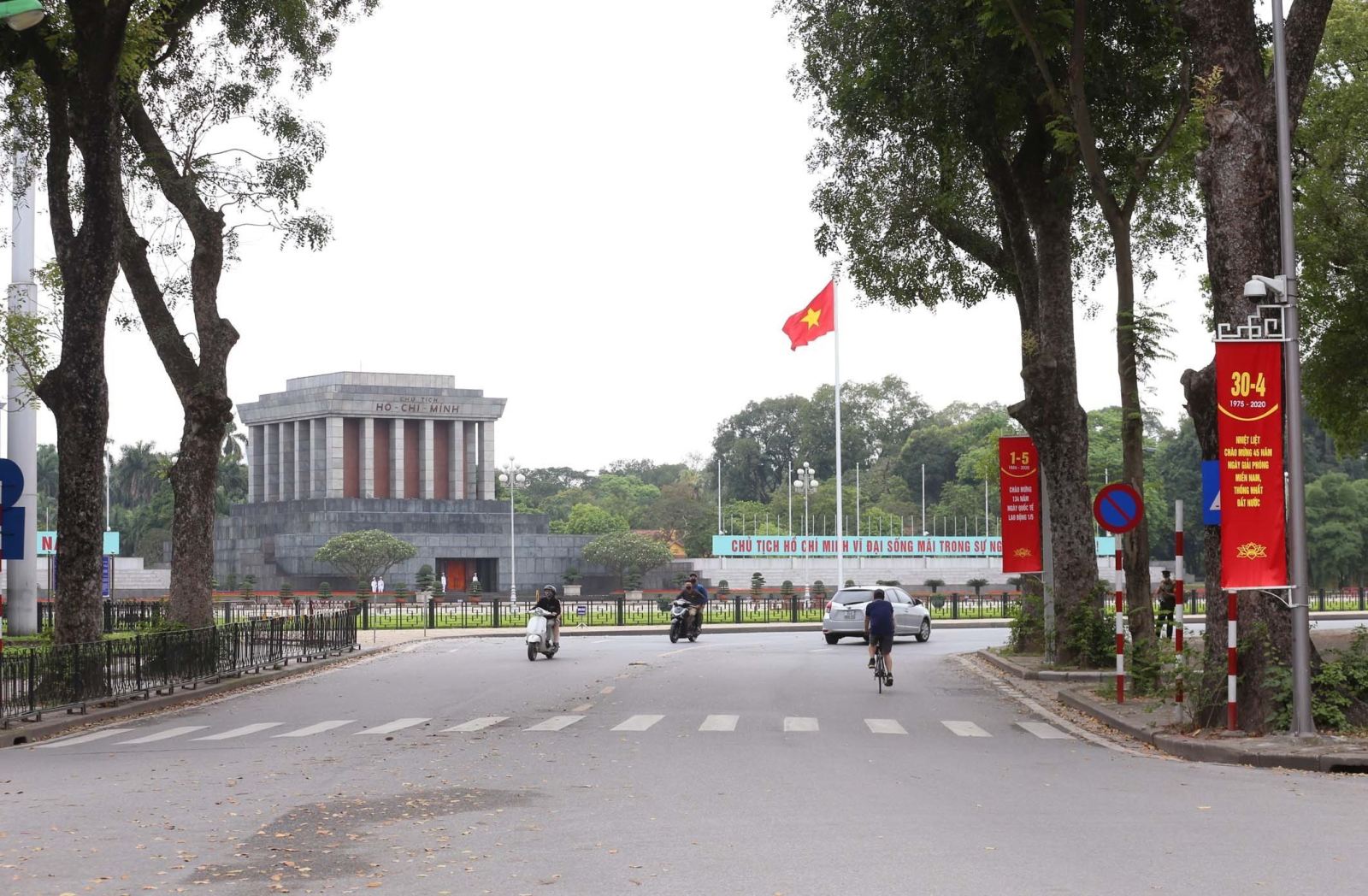Hanoi (VNA) – At the wishes of the Party and people, in the morning of November 29, 1969, the Politburo discussed and decided: With endless love and eternal gratitude to President Ho Chi Minh, we must do our best to preserve his body in a mausoleum.
The Party and State decided to build the mausoleum in the historic Ba Dinh Square, where he read the Declaration of Independence, proclaimed the founding of the Democratic Republic of Vietnam. Uncle Ho’s mausoleum is both a monumental and a majestic work of architecture; measuring 21.6 metres high, 31 meters wide at the front. It has two gates at the wing sides. The three-floor foundation of the Mausoleum is paved with dark marble. The upper floor is smaller than the lower one, forming a massive three-tiered structure. The architecture makes a firm and dignified shape for the Tomb.
The mausoleum also has an elegant three-levelled roof with diagonal lines, looking neat and simple, yet modern and traditional. There are four rows of silver-gray marble pillars around the mausoleum. On the morning of August 29, 1975, the Party and State solemnly hosted the inauguration of the Ho Chi Minh Mausoleum and let the late President rest in the hearts of the people. Behind the four marble pillars are four vermilion red marble walls, where late President Ho Chi Minh rests. After nearly 700 days and nights of constructions, with the help of the Party, Government and people of the Soviet Union, the building was complete.
The Government of the Soviet Union helped build the mausoleum. From February 9-23, 1970, the Government of the Soviet Union sent a delegation of seven officials to Vietnam to discuss the design of the Ho Chi Minh Mausoleum. Within a week, experts from the Soviet Union and Vietnam finished drafting the design.
On October 19, 1970, the draft was adopted at the Politburo session. For over a month, Vietnamese architects, engineers and technical staff had completed the “draft design” of the mausoleum. From March 19 to May 6, 1970, a delegation of three Vietnamese architects brought the “draft design” with them and continued the work with Soviet experts. Together, they finalised a design suitable for the tropical climate of Vietnam. This design was dubbed Project 75808.
During the period, donators nationwide and worldwide offered their contributions to the building of the mausoleum. At the wishes of the people, the Politburo of the Central Party decided to postpone the review of the “draft design” to four to five months in order to collect designs of the mausoleum as well as put them on showcase for public poll.
After launching the design campaign, between the end of May to end of August 1970, the Organising board received more than 200 different design projects from 16 units, sectors and individuals. Of which, 24 were shortlisted and displayed in 5 locations, namely Hanoi, Hai Phong, Thai Nguyen, Son La and Nghe An. The exhibition received a total of 745,487 visitors and 34,022 comments.
After 10 days of exhibition, the “preliminary design” synthesising public opinions was brought to the Soviet Union for further review. February 9, 1971, in Moscow, “the Agreement between the Government of Democratic Republic of Vietnam and the Government of Socialist Republic of Soviet in the Soviet Union providing technical assistance for Vietnam to preserve the body of late President Ho Chi Minh and build the Mausoleum was signed by representatives in the two Governments.
On November 3, 1971, Prime Minister Pham Van Dong signed a decision to officially establish a board in charge of the construction of President Ho Chi Minh Mausoleum. The same day, Deputy Prime Minister Do Muoi signed a decision to establish a command for the construction of Ho Chi Minh Mausoleum. On December 31, 1971, the technical design of the mausoleum was approved.
